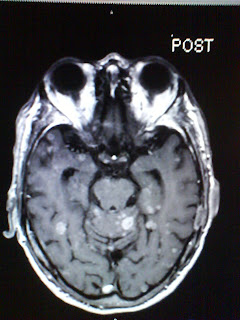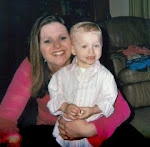

These images are the abdomen of a 35 year old male. He came in with abdomen pain and had an abnormal CT scan and ultrasound. The patient has a mass in his liver. It is large measuring 7x6cm. The radiologist read this hepatic lesion to most likely be a giant hemangioma due to its enhancement characteristics. In the images I provided you can clearly see the pathology in the patients liver. I found this exam to be very interesting because I have not seen a lot of abdomen scans in MRI. CT is usually the first choice for an abdomen scan because MRIs can be very time consuming and the pt has to do numerous breath holds and may not be in a suitible condition to do so especially if they are in a lot of pain.










.jpg)